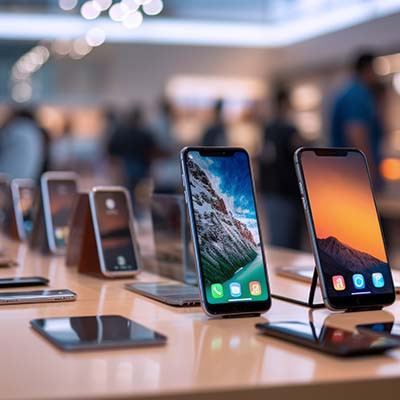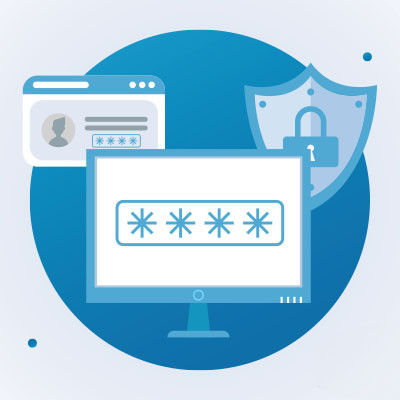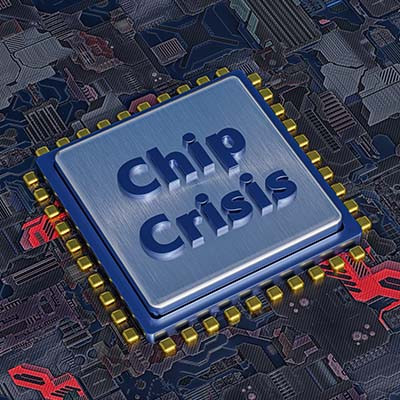After the tragic events of September 11, 2001, terrorism became a topic everyone heard about daily. The "War on Terror" lasted over a decade, toppling governments and sending a clear message that terrorists would be hunted down relentlessly. While major terrorist attacks have happened since then, the battleground has shifted. Today, one of the biggest threats comes from cyberspace. Let's take a closer look at the rise of cyberterrorism.
Global Tech Solutions Blog
Water cooling is a common method of keeping computing hardware at reasonable temperatures, particularly for gaming PCs, data centers, and similar high-demand applications. What if, however, a business used a similar method to keep their entire building climate-controlled?
Microsoft intends to do so in some new data centers, as many residences have begun implementing a version of this system.
For many, the New Year is a time of renewal and fresh starts, allowing us to turn the page and begin our next lap around the sun on the right foot. That said, the holiday is also steeped in traditions—for instance, the Times Square celebration, where a massive ball is slowly dropped to signify the countdown until the calendar officially shifts from one year to the next.
This tradition has a fascinating history, based mainly on the technology of the times.
Want to be a business without hearing how artificial intelligence is changing the industry? Good luck; it’s a big deal that this technology has flourished in recent years, and businesses have found all kinds of ways to implement it. While AI has significant capacity for growth and to be an excellent tool to help human society, a lack of AI regulation has led some to believe that it’s only a matter of time before something bad happens that ruins a good thing for everyone.
If you’re a regular reader of this blog, you’ve probably come across articles on blockchain before. This week, we're shifting gears to explore a new topic: should cryptocurrency, which is enabled by blockchain technology, be subject to taxation by state, federal, and international authorities? Let’s dive into what blockchain is, how it supports cryptocurrency, and the ongoing debate about potential taxation.
The smartphone market used to be a hallmark of innovation, but nowadays, aside from the folding form factor, smartphone manufacturers have decided that the technology works, more or less, the same. What does this decline in innovation mean for you and your business? It might actually not be all that bad.
The big game was this past Sunday, and if you are like millions of other people, you tuned in to see the spectacle of the game, the halftime show, and Taylor Swift. Behind the scenes, the National Football League has been utilizing emerging technologies to help them solve some of their biggest problems. Let’s go into three ways the NFL is using technology to improve their product.
Every year in January, the Consumer Electronics Show brings thousands of technology exhibitors to Las Vegas to showcase the up and coming innovations that will drive industries forward. It’s a fun time to be a tech nerd, because we get to see some pretty impressive stuff and how it might shape the future.
This year has some pretty exciting and interesting new technologies, and we wanted to share some of them with you!
We work with quite a few businesses, but one is a lot more remote than the rest of them. We wanted to share a story that one of our more discreet client organizations told us after we helped them resolve a particular challenge. Don’t worry, we asked, and sharing this won’t land us on the naughty list.
Technology has been a consistent force in the betterment of humanity, constantly pushing it to reconsider old ways of doing things and what could be improved. Key industries that have just about always utilized technology, from factories to old-fashioned wheels and farm equipment, include agriculture and manufacturing. In fact, 3D printing might be able to help produce food! Let’s look at what this technology could do to fill the stomachs of hungry people around the world.
Love them or hate them, cutesy little acronyms like this just don’t have a place in business communications. However, for some people, they’ve become so habitual that they almost can’t help but use them everywhere. In light of this lack of meaning, one artist and tinkerer has devised a way to judge whether or not the “LOL” is sincere.
Identity can be a complex thing to discuss, but in terms of security, it’s fairly straightforward. You either are who you say you are, or you’re not. With the metaverse taking off, individuals will need to be careful about how they are authenticating their accounts and identities, but what does this mean for businesses?
If Edgar Allan Poe worked in an office, here’s what one of his works would sound like:
True!—nervous—very, very dreadfully nervous I have been and am, but why will you say that I am mad? The office had sharpened my senses—not destroyed—not dulled them. Above all was my sense of hearing. I heard all things in heaven and on earth and many things in…the other place. So, how then am I mad, especially when I can so healthily and calmly tell you this story?
Despite their best efforts, cybersecurity can be a major cause for concern for all kinds of businesses and organizations. Even with a full team of cybersecurity professionals, data breaches can occur, and many of the worst data breaches of 2022 have been quite devastating. Let’s take a look at some of the worst ones so far.
When it comes to innovative new technologies, look no further for inspiration than good-old classic science-fiction and pop culture. You might be surprised by how many concepts first seen in works of fiction have made their way into our day-to-day lives. Let’s take a look at some of the more noteworthy examples.
The microprocessor shortage that is affecting businesses all over the world is about to get worse before it gets better. Ukraine currently produces between 45-to-54 percent of the world’s semiconductor-grade neon, a critical component for the lasers used to make microchips. With Russia invading the sovereign nation, two of the largest neon-refinement companies, Ingas and Cryoin have halted production, leaving an already massively short market in dire straits.
As cliche as it sounds, one of the best ways to create a more positive workplace is to simply put more positivity into it. Let’s exercise this for a moment by setting the often-talked-about worst-case scenario to the side, and focus on what the optimal experience could be with the right technology management in place.





















